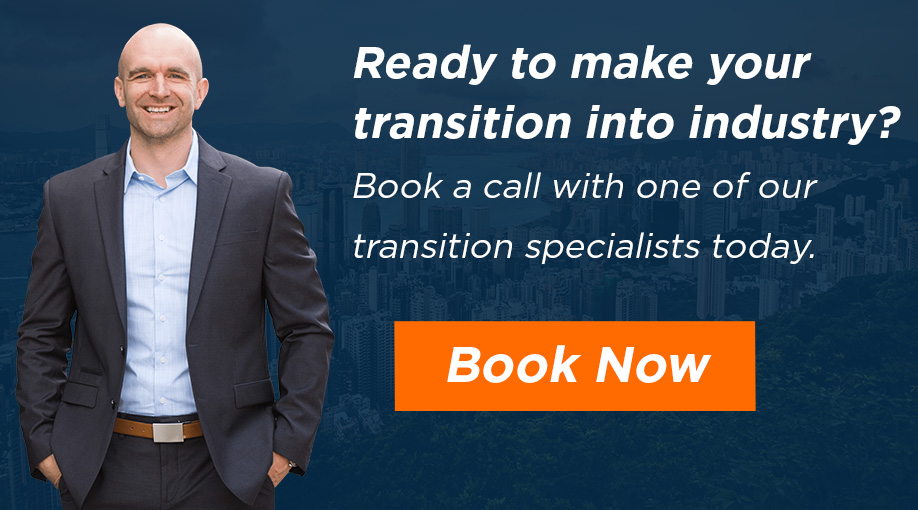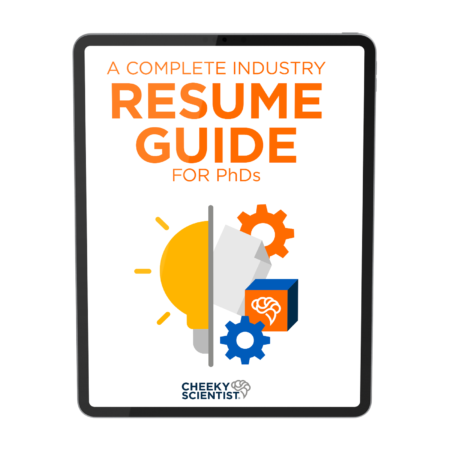Top 10 Reasons Your LinkedIn Messages Are Being Ignored

I set a goal to connect with two new people a day on LinkedIn.
This was my entire job search strategy…
Get on LinkedIn.
Find someone who worked for Baxter, Pfizer, Amgen or similar.
Click the blue connect button.
Repeat once.
Go back to writing my thesis.
The end.
It was a bad strategy.
No one accepted my connection requests.
Literally no one.
I remember refreshing my screen at the end of every day hoping to see some new connections.
I thought that someone was wrong with my account.
I even sent an email to LinkedIn’s customer service department.
They told me my account was fine.
How embarrassing.
I’m sure the person who wrote the email back to me was like…
You’re an overeducated loser with no common sense who is never going to get a PhD job.
Fair assessment.
A few months later…
I decided to crank it up a notch.
I decided to start writing personal messages to people instead of just clicking the connect button and sending off the default message.
I’d like to add you to my professional network on LinkedIn.
Yeah…
No one answers those messages.
But surely they’d answer my personal message if I took the time to fully explain who I am, what kind of job I wanted, and how they could help me.
Wrong.
I still got not responses.
Okay, well…
I got one response.
One person replied back to me asking how we met.
Umm…
We didn’t meet.
I didn’t know what to say so I explained to him that I was a PhD student looking for a job in industry. I told him about all the skills I had and then asked him for any advice he might have.
Three paragraphs.
21 sentences.
That’s how long my message to him was.
His response…
Zero paragraphs.
Zero sentences.
He didn’t respond.
What was I doing wrong?
Why LinkedIn Matters
Two new people sign up to LinkedIn every second.
Every. Second.
This is according to LinkedIn’s Q1 2014 earnings report.
A similar report showed that LinkedIn now has over 347 million users total.
And…
A report by Social Times shows that 94% of recruiters and hiring managers use LinkedIn to vet job candidates.
Only 65% use Facebook and only 55% use Twitter.
What does this mean?
It means that LinkedIn is your best chance of making a good first impression online.
It also means that the competition is growing fast.
It’s getting harder and harder to get noticed.
Connecting With Someone Is A Negotiation
Connecting with someone is a negotiation.
You’re trading value for value.
The reason people aren’t connecting with you is because you’re approaching them from a position of need.
You’re approaching them from a position is weakness.
Nobody respects weakness.
Hiring managers, recruiters, and working professionals in general are not running a charity.
They’re running businesses.
They’re managing careers.
Time is money.
Attention is money.
Why should anyone give you their money?
Because you need it?
So what.
Don’t fall into the trap of thinking that people owe you their time and attention just because you need it.
Need doesn’t matter.
Value does.
Stop connecting with people from a position of weakness.
Stop asking “What do I need?” and start asking “What value can I give?

10 Reasons You’re Being Ignored
The first step to correcting a problem is identifying why it’s happening.
Once you know why you’re getting a negative result, you can try something new.
You can implement a better strategy.
If that strategy fails too…
Keep testing.
Test and tweak until your messages are being opened every time.
Here are 10 reasons why your messages are being ignored…
1. You don’t know anyone.
Blindly reaching out to people who you’ve never met is a waste of time.
They don’t know you.
They don’t care about you.
But…
They might care about someone else.
Dig in and see if the people you want to connect with know someone you know.
Don’t just stare at those little 2nd and 3rd LinkedIn connection icons that appear next to people’s names when you’re searching and do nothing.
Wake up.
Click the “shared connection” link.
See who you and your desired connection both know.
Then…
Ask your shared connection for an introduction.
Or, ask to use their name as a connection request reference.
Once you get the okay, reach out to your desired connection using the name of your shared connection in the subject line of your message.
2. You don’t say why you’re connecting.
Never send a message without using the word “because.”
When it comes to connecting with someone new, intent is not enough.
What doesn’t matter.
Why does.
Why are you reaching out?
Why do you want to connect?
The reason you’re connecting should be explained in the very first sentence of your message.
Most importantly…
This reason needs to be to the other person’s benefit, not yours.
3. You don’t care about them.
LinkedIn is a crowded place.
The world is a crowded place.
Everyone is fighting for attention.
As a result…
People are on defense now.
More than ever before, people are actively protecting their attention.
This means that when you send a message to someone, they are looking for reasons to ignore it.
They are looking for reasons to delete it without reading it.
You have to give them a reason not to delete it.
News flash…
You are not a good reason.
Remember, they want to delete you.
The best way to get people to open and respond to your messages is to make the message all about them.
People don’t want to delete themselves.
They want to read about themselves.
Give them something to read.
Do your research.
Find out what they like. What they’ve written about. What their hobbies are.
Stalk them…
In a good way.
Read everything you can about them. Comment on their articles. Find out who else their connected to on LinkedIn. Find out who their colleagues are on LinkedIn.
Get to know them.
Make an effort.
Care.
Then use what you know to make an emotional connection.
Bring up something they’ve written, achieved, accomplished, completed…
As long as it’s about them.
4. You write too much.
Limit your messages to 50 words.
That’s it.
Not a single word more.
Imagine a stranger coming into your office and sitting down next to you at your desk while you’re working.
The stranger starts talking about himself, his hopes, his dreams, and all of his little career goals.
He talks and talks and talks…
15 minutes go by.
How annoyed would you be?
My guess…
Very.
But this is exactly what most PhDs do when they reach out to other professionals on LinkedIn.
They send five paragraph essays talking about themselves and then act surprised when the other person never responds.
Stop writing novels.
Your first LinkedIn message to someone should not be the same length (and density) as the Introduction section of the last peer-reviewed paper you authored.
Tighten it up.
Keep it short.
Keep it simple.
50 words.
No more.
5. You don’t ask any questions.
If you want a response, ask a question.
Too many PhDs think that writing a message to someone entitles them to a response.
Really?
People should help you just because you wrote a message asking for help?
How arrogant are you?
Listen…
No one owes you a response.
You have to earn a response.
You have to ask for a response.
6. You don’t use a P.S.
Every message you send to someone new on LinkedIn should have a P.S.
This P.S. should include a question.
P.S. is short for Post Script, which is an additional remark placed at the end of a message.
Depending on the statistics you look at…
A P.S. in a message gets read more than every other part of the message except for the subject line.
P.S. I see that you’ve been to Hawaii. I’ve always wanted to go. Which island did you visit?
P.S. You mention in your profile that you study protein degradation. Which proteins have you studied?
P.S. You wrote an article on NF-κB signaling. I did my thesis work on this. Have you read any good reviews lately?
This is how your messages should be ending.
Ask a question.
Show you care.
Make it about them, not you.
7. You’re needy.
People respond to value, not need.
The main reason no one is responding to your messages is because you aren’t offering any value.
You’re asking for help.
You’re selling yourself.
And it’s obvious.
Stop being so obvious.
Stop blatantly begging for a handout.
Your first message to a desired connection on LinkedIn should have no indication that you’re searching for a job.
The same goes for your second, third, and fourth messages.
No indication.
Get it?
Instead, you should be offering value and asking friendly questions.
Show the other person that you’re in this for the longterm.
Show them that you care about the relationship.
Yes, this takes more time.
But it’s worth it.
You might be thinking…
But I don’t have anything to offer?
Not true.
You have plenty to offer.
You can give them praise and validation for their work.
You can send them links to articles they might enjoy.
You can connect them with other people (this is a very smart, high-level strategy that very few PhDs do).
Real connections are not made by taking.
They’re made by giving, giving, giving, and giving some more.
8. Your profile is awful.
How would you react if someone came up to you on the street with a paper bag over their head and started talking to you?
You’d be scared for your life.
You wouldn’t interact with them.
You wouldn’t help them get a job.
You’d run.
Yet, this what many PhDs do on LinkedIn.
They post a scary, unprofessional photo of themselves and think “Good enough.”
Or, worse…
They don’t post a profile picture at all.
Start spending some quality time with your LinkedIn profile.
Post a professional picture.
Post a professional headline.
Fill in your experience and education details.
Take the brown bag off.
9. Your subject line is awful.
Clever, general, and ambiguous message subject lines get deleted
Simple, specific, and personal subject lines get opened.
If possible, drop a mutual connections name in the subject line.
Otherwise…
Write something that’s specifically related to the other person’s interests.
Also…
Keep it short.
Use 5 words or less.
If it’s your first message, tag the words “quick note” or “quick follow-up” at the end of the subject line.
10. You contribute nothing.
Who are you?
How do I know you?
What do you want?
These are the first three questions people are going to ask themselves when they see a message from you in their inbox.
The sooner you answer these questions, the better.
Here’s the key…
You can answer all three questions before you send someone your first message.
How?
By engaging on LinkedIn.
You can “like” and comment on people’s posts. You can share articles. You can contribute to group discussion threads. You can even write your own posts.
You don’t have to limit yourself to LinkedIn either. You can engage professionally on Facebook, Twitter, and other social media platforms too.
You can join exclusive groups and training programs.
You can create your own website using your name as the URL and then post your industry résumé or CV to it.
The list goes on and on.
See and be seen.
Keep yourself at the top of people’s minds and on the tip of their tongues.
The more people see you engaging, the more likely they are to connect and respond to your messages.
Honest engagement builds trust.
Start building trust.
Start engaging.
If you’re ready to start your transition into industry, you can apply to book a free Transition Call with our founder Isaiah Hankel, PhD or one of our Transition Specialists. Apply to book a Transition Call here.

ABOUT ISAIAH HANKEL, PHD
CEO, CHEEKY SCIENTIST & SUCCESS MENTOR TO PHDS
Dr. Isaiah Hankel is the Founder and CEO of Cheeky Scientist. His articles, podcasts and trainings are consumed annually by millions of PhDs and other professionals in hundreds of different countries. He has helped PhDs transition into top companies like Amazon, Google, Apple, Intel, Dow Chemical, BASF, Merck, Genentech, Home Depot, Nestle, Hilton, SpaceX, Tesla, Syngenta, the CDC, UN and Ford Foundation.
Dr. Hankel has published 3X bestselling books and his latest book, The Power of a PhD, debuted on the Barnes & Noble bestseller list. His methods for getting PhDs hired have been featured in the Harvard Business Review, Nature, Forbes, The Guardian, Fast Company, Entrepreneur Magazine and Success Magazine.
More Written by Isaiah Hankel, PhD

















